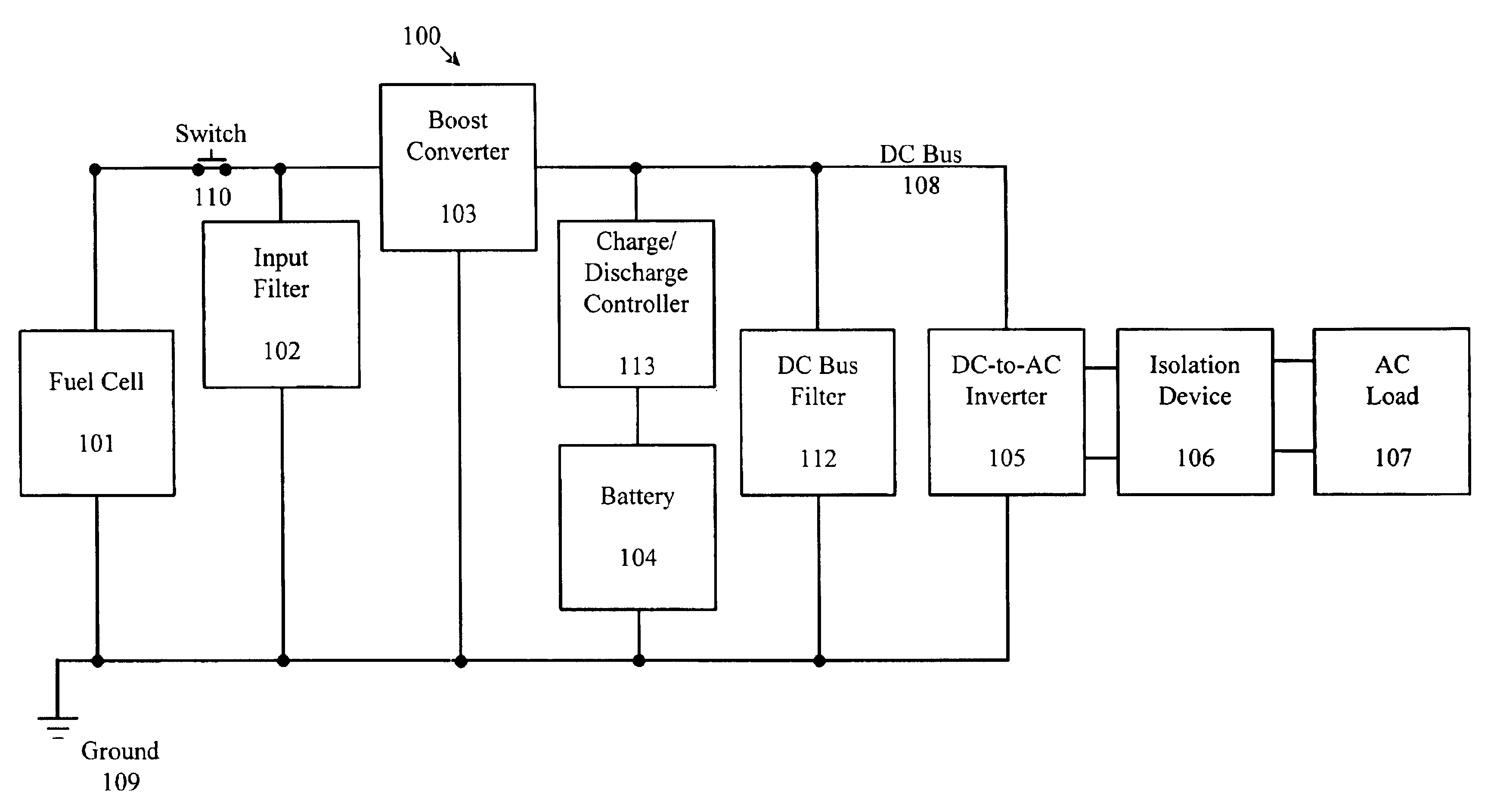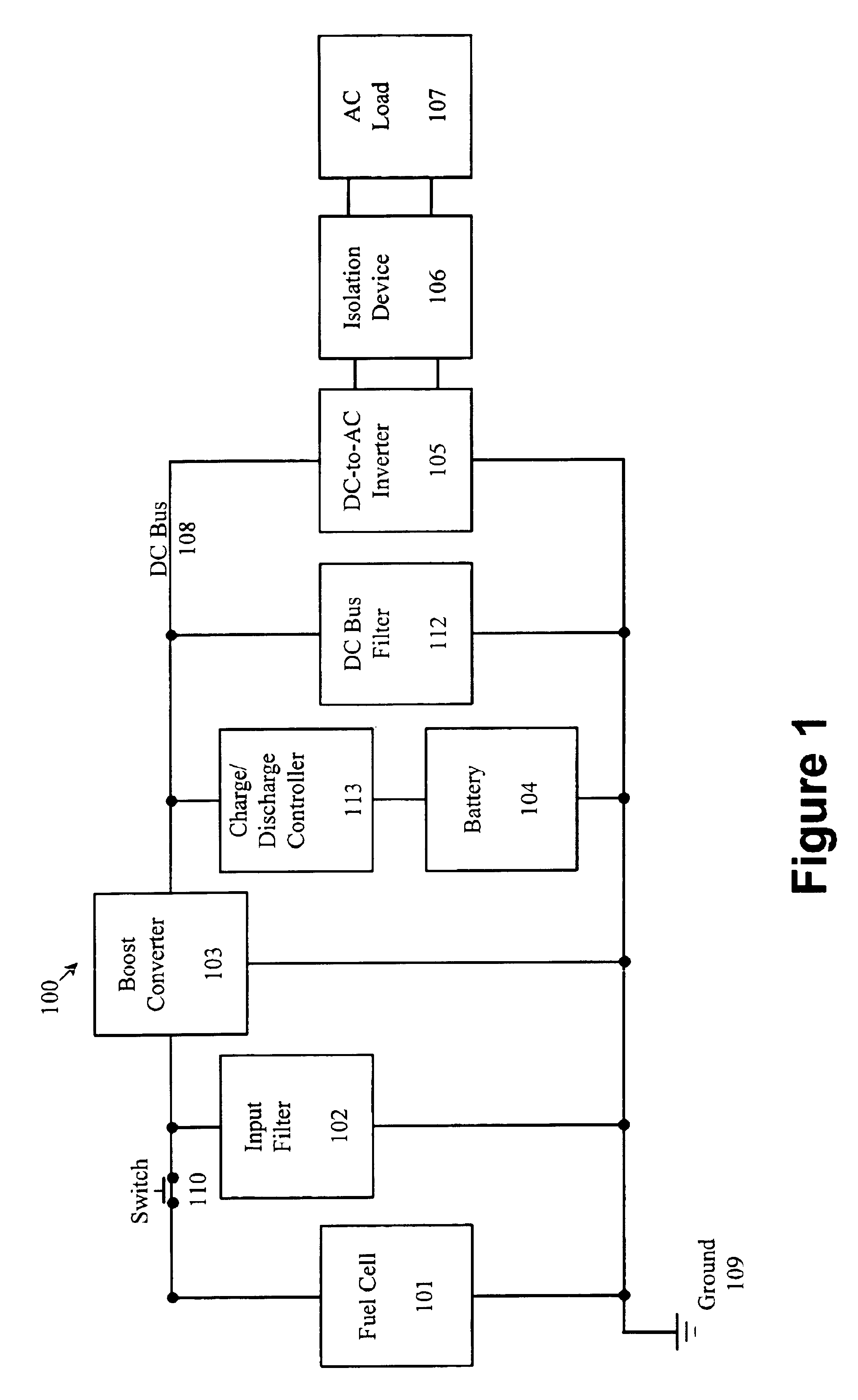Fuel cell inverter
- Summary
- Abstract
- Description
- Claims
- Application Information
AI Technical Summary
Benefits of technology
Problems solved by technology
Method used
Image
Examples
Embodiment Construction
[0014]FIG. 1 provides a block diagram of a fuel cell inverter circuit 100, in accordance with the invention. As shown in FIG. 1, a fuel cell 101 is coupled to the remainder of circuit 100 via a switch 110 that operates to disconnect fuel cell 101 from the remainder of circuit 100. The input of a boost converter 103 is coupled to input filter 102 and it is also coupled to fuel cell 101 via switch 110. A charge / discharge controller 113 and a battery 104 (coupled in series to each other) are coupled to the output of boost converter 103. Battery 104 is sized to produce a voltage greater than or equal to the maximum operating voltage of fuel cell 101. A DC bus filter 112 and the input to a DC-to-AC inverter 105 are both coupled to the output side of boost converter 103. The output of boost converter 103, charge / discharge controller 113, and the input of DC-to-AC inverter 105 are coupled to a DC bus 108. DC bus 108 typically is designed to operate at voltages slightly above the voltage le...
PUM
 Login to View More
Login to View More Abstract
Description
Claims
Application Information
 Login to View More
Login to View More - R&D
- Intellectual Property
- Life Sciences
- Materials
- Tech Scout
- Unparalleled Data Quality
- Higher Quality Content
- 60% Fewer Hallucinations
Browse by: Latest US Patents, China's latest patents, Technical Efficacy Thesaurus, Application Domain, Technology Topic, Popular Technical Reports.
© 2025 PatSnap. All rights reserved.Legal|Privacy policy|Modern Slavery Act Transparency Statement|Sitemap|About US| Contact US: help@patsnap.com



